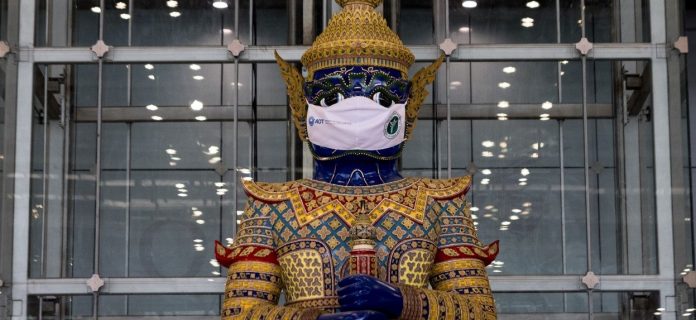Tourism is one of the worst affected sectors throughout the Covid-19 pandemic. From 2019 to 2020, international tourist arrivals and tourism receipts fell by 82% and 78%, respectively, in Southeast Asia. This resulted in high job losses in countries across the region. Many of these countries reported that the tourism sector accounted for almost one-third of all job losses. Informal tourism workers such as street food vendors, souvenir sellers, freelance tour guides, and drivers, who form a substantial part of the local tourism value chain, suffered the greatest losses in employment and income. Small businesses experienced partial or complete closure as they failed to operate during Covid-19 lockdowns and travel restrictions.
While the countries of Southeast Asia are showing signs of cautious recovery resulting from vaccination drives and milder restriction measures, tourism is unlikely to go back to its pre-Covid-19 level anytime soon. This is particularly because the region’s travel source countries tend to be highly concentrated. A large proportion of tourists come from within Southeast Asia (36% in 2019), and a big share comes from China (22%). According to a report by the China Tourism Academy, Chinese outbound travel plummeted by 87% in 2020 vis-à-vis 2019. A poll among Chinese travelers highlighted that they prefer outbound destinations that have zero Covid-19 cases. In the foreseeable future, most wish to travel domestically, avoiding international flights. The sentiments mirror China’s recently released five-year tourism development plan for 2021-25, which largely focuses on domestic tourism.
In this scenario, Southeast Asian countries need to transform the tourism economy. The pandemic has presented opportunities to build forward better.
Thailand has already tried to move in this direction. It is focusing on four areas to increase economic resiliency, specifically to: a) diversify its tourism landscape to niche segments that attract higher spending tourists; b) attract visitors to 2nd-tier cities, expand quality services and premium options in less crowded tourist spots, and generate more income for local economies; c) pay more attention to environmental sustainability; and d) increase investment in new tourism destinations, products, and technologies.
Similar intentions are expressed by Indonesia as it aims for quality tourism rather than quantity. It is targeting to attract only 2 million visitors in 2022, which is almost a 90% drop from pre-pandemic times when it was attracting around 16 million foreign tourists a year. Indonesia aims to increase the proportion of long-haul visitors, who can spend more time and money across old and new destinations in the archipelago.
The countries will need to work together at the regional level, primarily through ASEAN mechanisms but also in cooperation with countries in the larger Asia-Pacific region. The first order of business is to facilitate cross-border movement of travelers. Countries need to mutually recognise each other’s vaccination certificates, harmonise rules on travel procedures, and safeguard public health to manage the pandemic. This will enable the countries to capture new source markets, thus compensating for the revenue loss due to the decrease in Chinese tourists.
The countries need to build confidence among travelers to stimulate demand. Marketing and communication, in both traditional and new media, will enable travelers to make informed decisions. In addition to national tourism campaigns (such as the Philippines’ More Fun Awaits or Live Fully in Vietnam), ASEAN should foster cooperation through common digital platforms for sharing information and graphics on safe tourism practices. The Greater Mekong Subregion has designed the Mekong Moments platform that provides photos, videos, and stories of travelers to raise awareness about travel in the member countries.
Consumer reliance on digital means for travel-related services, particularly bookings, was on the rise pre-Covid-19. The pandemic has made the adoption of digital and other technological tools even more crucial. As countries implement contactless technologies or mobile bookings and online payments for tourism related transactions, they should also cooperate regionally on cross-border data flows for information related to vaccine passports or digital health certificates.
Southeast Asian countries should collaborate in sharing best practices and building each other’s capacities. Positive experiences of leading countries can be emulated, notably in government-driven transformation in big data analytics for tourist traffic tracking, responsiveness to shifting tourists’ preferences, and levelling the playing field for small businesses. Some national-level tourism agencies have already started working with online travel agents, telecommunications firms, and financial services companies to make more informed policy decisions. Singapore’s Tourism Board, for example, has partnered with VISA, Mastercard and digital tourism booking platform Klook for the “Singapore Rediscovers” campaign. The Tourism Authority of Thailand had partnered with online travel agent Agoda to support the government’s domestic tourism program. These experiences can be shared and scaled up at the regional level.
As the countries in the region adapt to post-Covid-19 realities, they need to strive for their tourism sectors to recover better. The pandemic brought to the fore the vulnerabilities in the tourism sector. It should also induce Southeast Asian countries to conduct risk assessments and to adopt policies, technologies, and safe measures that build economic resilience against future pandemics and other hazards.
By Sanchita Basu Das / fulcrum
The views and opinions expressed in this article are solely those of the author and do not necessarily reflect the position of AsiaWE Review.




